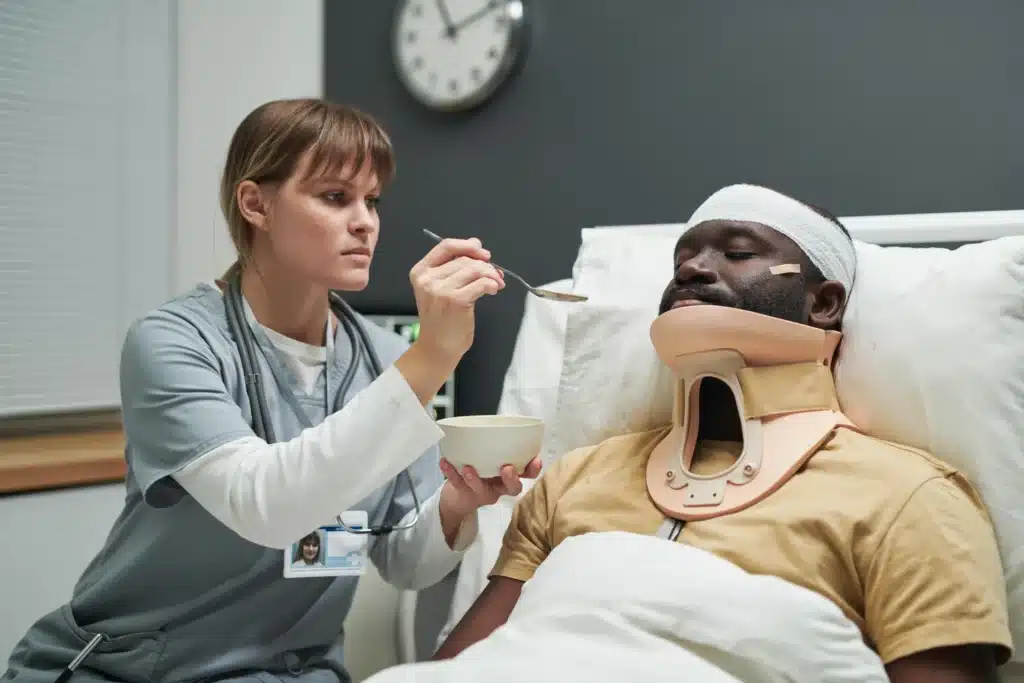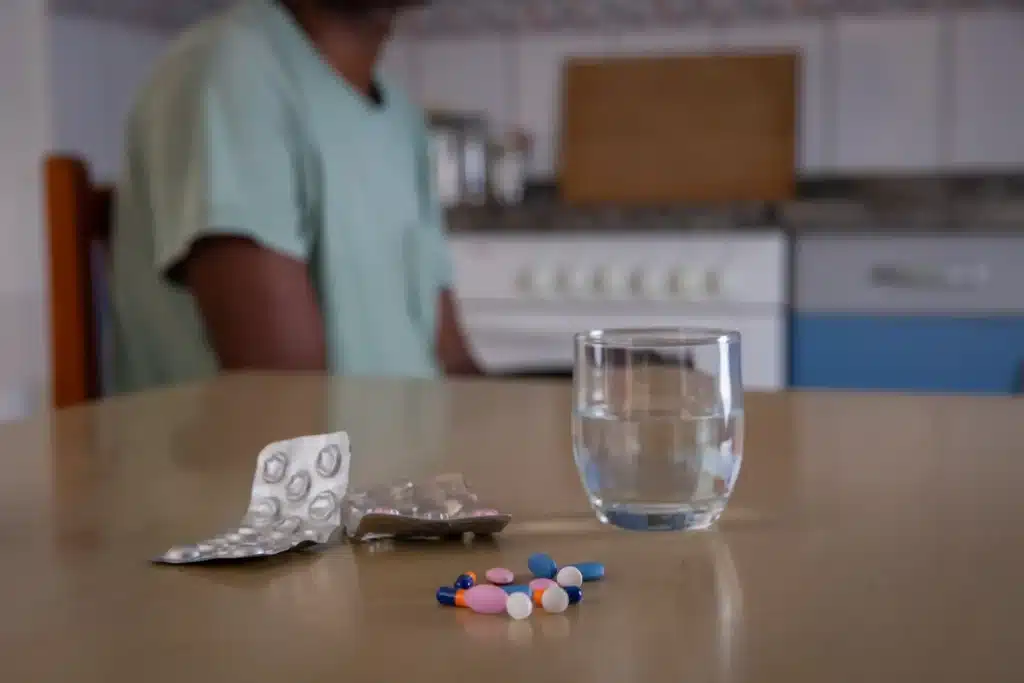
Table of Contents
TogglePost-operative relief refers to the comprehensive approach to minimizing discomfort and promoting healing after surgery. For patients recovering from spine surgery, post-operative relief involves a combination of pain management techniques, recovery strategies, and lifestyle changes.
It’s not just about reducing pain—it’s about empowering you to reclaim your life with confidence and comfort. As a spine surgeon with over 25 years of experience at Long Island Neuroscience Specialists, I’ve seen how critical post-operative relief is for a patient’s well-being.
Let’s explore the elements that make recovery not only successful but transformative.
Managing pain effectively after surgery is a cornerstone of post-operative relief. At Long Island Neuroscience Specialists, we use a range of techniques to tailor pain management plans to each patient’s needs.
These include medications, non-medication therapies, and advanced technologies. Medications like opioids, NSAIDs, and local anesthetics can play a vital role when used appropriately.
For instance, opioids provide powerful pain relief, but we emphasize using them sparingly and under close supervision to minimize risks. NSAIDs like ibuprofen reduce inflammation, while local anesthetics offer targeted relief to specific areas.
Non-medication options, such as guided imagery and relaxation techniques, complement these medical treatments. Many patients find that mindfulness practices and gentle stretching exercises provide additional comfort.
Advanced options like Patient-Controlled Analgesia (PCA) systems empower patients to manage their pain with the push of a button, ensuring a balance between relief and safety.

Swelling and inflammation are natural responses to surgery, but managing them effectively can significantly speed up recovery. Techniques like cold therapy and compression garments can make a noticeable difference.
Applying cold packs to the affected area reduces inflammation, while compression garments improve circulation and prevent fluid buildup. Elevating the surgical site is another simple yet effective method.
For example, patients recovering from lumbar spine surgery are encouraged to lie flat with their legs slightly elevated. This position reduces swelling and promotes better blood flow.
Keeping an eye on swelling and addressing it early is critical—if inflammation persists or worsens, it could indicate complications that require medical attention.
Healing after spine surgery is a process that demands a multi-faceted approach. Physical activity is one of the most important factors.
Gentle, doctor-recommended exercises improve circulation and prevent stiffness. For example, I often suggest light walking as a starting point for many patients. Nutrition is equally vital.
A diet rich in protein, vitamins, and minerals supports tissue repair. Hydration is another often-overlooked element that can make a significant impact.
Staying hydrated keeps your body’s systems functioning optimally, which aids in wound healing. Breathing exercises are another strategy I recommend.
Deep breathing not only improves oxygenation but also helps prevent complications like pneumonia. By integrating these practices, you can accelerate your recovery while minimizing discomfort.
Before surgery, I always advise patients to prepare their homes to make recovery as smooth as possible. Simple adjustments can have a big impact.
For example, arranging frequently used items within arm’s reach minimizes strain. Creating a designated recovery space with supportive pillows, comfortable seating, and good lighting is another practical tip.
Safety is another key consideration. Removing tripping hazards and ensuring clear pathways can prevent accidents during the early stages of recovery.
Installing grab bars in the bathroom and using a shower chair are excellent ways to enhance both safety and comfort. Having a support system is invaluable.
Whether it’s family, friends, or professional caregivers, enlisting help for tasks like meal preparation and transportation allows you to focus on healing.

Caring for your surgical wound properly is crucial for preventing infections and promoting healing. Always keep the wound clean and dry, following the specific instructions provided by your healthcare team.
For example, we often recommend using sterile dressings and avoiding water exposure until the incision is fully healed. Monitoring for signs of infection, such as redness, swelling, or unusual discharge, is essential.
If you notice these symptoms, contact your doctor immediately. Using prescribed antiseptics or ointments can aid in healing while protecting against bacteria.
Avoid strenuous activities that may stress the incision site, and always follow your doctor’s guidance on when it’s safe to resume normal activities.
Post-operative recovery isn’t just physical—it’s emotional too. Many patients experience anxiety, frustration, or even depression during the healing process.
Acknowledging these feelings is the first step toward addressing them. I often recommend counseling or support groups for patients struggling emotionally.
Sharing experiences with others who understand your journey can be incredibly reassuring. Mindfulness and relaxation exercises also help manage stress, which in turn supports physical healing.
Remember, a positive mindset plays a significant role in overall recovery.
The right dietary and lifestyle changes can accelerate healing and enhance overall well-being. Focus on consuming nutrient-rich foods like lean proteins, leafy greens, and whole grains.
These provide the building blocks your body needs for tissue repair. Avoid processed foods and excessive sugar, which can promote inflammation.
Lifestyle changes, such as quitting smoking and limiting alcohol consumption, are equally important. These habits can hinder the body’s natural healing processes.
Incorporating gentle yoga or stretching into your routine, once approved by your doctor, can further support recovery by improving circulation and reducing stiffness. Read more here.

Knowing when to seek medical advice is vital for a safe recovery. Symptoms like excessive pain, unusual swelling, or a high fever could indicate complications and should never be ignored.
At Long Island Neuroscience Specialists, we encourage patients to communicate openly and frequently with their healthcare team. Keeping a log of your symptoms can be helpful during follow-up visits.
This allows your doctor to address any concerns promptly. Remember, it’s better to ask questions and seek clarification than to wait and risk complications.
Modern technology offers a range of tools to make recovery more comfortable. For instance, ice packs and heating pads are simple yet effective for managing pain and swelling.
Compression wraps and braces can provide additional support and stability, especially for patients recovering from complex spine surgeries. Mobility aids, such as walkers or canes, help prevent falls and reduce strain.
Adjustable beds and ergonomic chairs are also worth considering, as they allow for better positioning during rest and recovery. At Long Island Neuroscience Specialists, we often recommend these devices to enhance our patients’ comfort and safety.
Rehabilitation is a critical component of post-operative relief. Starting with gentle exercises approved by your doctor, such as light stretching or walking, helps restore mobility and strength.
As your recovery progresses, a structured physical therapy program can address specific areas of weakness or stiffness. Consistency is key.
Regular activity prevents muscle loss and promotes circulation, both of which are essential for healing. However, it’s equally important to listen to your body and avoid overexertion.
By striking the right balance, you’ll build a strong foundation for long-term health. Read more here.

Caregivers play an essential role in the recovery process. From assisting with daily tasks to providing emotional support, their contributions can make a significant difference.
It’s important to educate caregivers about your specific needs, including medication schedules and wound care. Encouraging open communication between caregivers and healthcare providers ensures that everyone is on the same page.
This collaborative approach helps prevent misunderstandings and fosters a supportive environment for recovery.
Misconceptions about post-operative relief can hinder recovery. One common myth is that enduring pain without medication builds resilience.
In reality, unmanaged pain can slow healing and increase the risk of complications. Similarly, fears about opioid addiction often lead patients to avoid necessary medications.
By using these drugs responsibly and under medical supervision, the benefits often outweigh the risks.
Another myth is that rest alone is enough for recovery.
While rest is important, gradual activity is essential for regaining strength and mobility. Addressing these misconceptions empowers patients to make informed decisions about their recovery.
Recovery doesn’t end when the incision heals. Long-term strategies, such as maintaining a balanced diet and staying active, are crucial for preventing future issues.
Regular follow-ups with your healthcare provider allow for early detection of any complications. Building a support system and maintaining a positive outlook can also make a lasting impact.
At Long Island Neuroscience Specialists, we’re committed to guiding our patients through every step of their recovery journey, ensuring they achieve the best possible outcomes.
Post-operative relief is about much more than managing pain—it’s about empowering patients to reclaim their lives. Through a combination of tailored pain management techniques, proactive recovery strategies, and emotional support, we help our patients achieve the best possible outcomes.
At Long Island Neuroscience Specialists, we bring over 25 years of experience to each patient’s journey, ensuring that they feel supported every step of the way. From preparing your home environment to understanding advanced pain management technologies, this guide has covered everything you need to know about post-operative relief.
Our goal is to provide not just a recovery plan but a roadmap to lasting health and well-being. If you have questions about your specific recovery process or would like to learn more about our services, we encourage you to contact us today.
GET IN TOUCH +
285 Sills Road
Building 5-6, Suite E
East Patchogue, NY 11772
(631) 475-5511
184 N. Belle Mead Road
East Setauket, NY 11733
(631) 675-6226
GET IN TOUCH +
285 Sills Road
Building 5-6, Suite E
East Patchogue, NY 11772
(631) 475-5511
184 N. Belle Mead Road
East Setauket, NY 11733
(631) 675-6226
SUBSCRIBE TO OUR NEWSLETTER +
Send us a Google review. Click this link and let us know how we did!
Review us on Yelp too.